Books
OTTORINO RESPIGHI, A SYMPHONIC ICEBERG
LIM publisher, 2024
Francesco Attardi stands as one of the greatest scholars of Italian symphonic music, from Giovanni Sgambati, whose Second and Third symphonies he reconstructed and published (Suvini Zerboni publ., Milan), up to Ottorino Respighi: this book (written together with 'student Lorenzo Casati) is the most complete study on the great 'submerged' heritage of the Composer, the only Italian who managed to break 'the glass ceiling', of prejudices which identified Italy as the exclusive kingdom of 'Opera’. Attardi's aim is to finally bring to light the extraordinary series of symphonic works - today unfortunately limited to the Pines, the Fountains of Rome, Antiche Danze and Arias and little else - with this great study and the promotion of performances of all of Respighi's production. The book opens with an 'Ouverture' on the history of twentieth-century music and the period in which Respighi lived, the first half of the century, and contains a youthful interview that Attardi did with Elsa Respighi, the Maestro's wife. In Attardi's (and Casati's) symphonic Iceberg, around forty compositions are narrated and analysed, including the youthful Preludio, chorale and fugue, the three splendid piano concerts including the one in the Mixolydian mode which triumphed in 1925 at Carnegie Hall which contains a splendid quote from Rhapsody in Blue. And again the Sinfonia drammatica (Dramatic Symphony), the ballet La boutique fantasque written for Diaghilev's Ballets Russes, with a resounding success in London in 1919; the Ballad of the Gnomes (Ballata delle Gnomidi) , the Belfagor Overture conducted at Carnegie Hall by Otto Kemplerer and also the Gregorian Concerto for Violin and Orchestra and the masterpieces commissioned by Koussevitzky for the Boston Symphony: the visionary Vetrate di Chiesa (Church Windows) and what, according to Attardi, is Respighi's masterpiece: the Metamorphoseon XII Modi (“12 Variation Modes”). 1042 pages that flow fluently, thanks to the passion and competence of the Authors.
Travel around the magic flute
Ed. LIM , Lucca, 2006
Travel Around The magic Flute is ad investigation in-the-round of the
last and most enigmatic work of Mozart: start by following the medieval
guilds of cathedral builders in a path that circles through the
Renaissance and Neo-Platonic Rosicrucianism and arrives at the
Scientific Revolution and the Enlightenment, and analyze the complex
cultural synthesis of this masterpiece ranging from the fable, written
to throw the Austrian Freemasonry into crisis, and the irreverent
comedy, where authors seem to want to make a mockery of the secret
societies.
This study overcomes discrepant interpretations of the Magic Flute
and reveals that Mozart was a lover of puzzles drawn from the arcane
world: in certain compositional devices such as "fugue" and "sonata
form" and dramatic insights such as the "sacred marriage" of Tamino and
Pamina and the "reversal" of the work – where protagonists become
antagonists and vice versa – we can see other such transformations as
well. The Magic Flute is conceived as a game, a Rosicrucian "ludus" in
which the Composer sends profound messages of existential and social
truths that, by virtue of their light tone, appear innocuous.
The multiple readings, the antinomies or apparent absurdities in fact
constitute the essence of this work, in which contradictions
complement, opposites coincide. As the Tarot deck of the Castel of
Crossed Destines by Italo Calvino, the story and the characters are read
from left to right, from bottom to top or vice versa, in a hermeneutic
game without end but with a profound coherence.
Schikaneder and von Born, the Illuminati and the Rosicrucians, Ars
Combinatorial and musical Architecture: all aspects and problems of this
masterpiece are addressed in this volume, which poses the most complete
and original writings on the subject.
Transparent leadership
Orchestral conducting and corporate management
FrancoAngeli ed. Milano 2004
This book by Francesco Attardi, assisted by Giuseppe Pasero, is aimed at orchestra conductors and company managers, public and private administrators, political and trade union leaders, musicians and enthusiasts, and at all those who want to reflect on their own way of practicing individually leadership in their respective professional fields and in the most varied contexts, from political to social, from the administration of a company to a research centre. Francesco Attardi and G. Pasero take the Conductor-Orchestra duo as a metaphor for excellence and make it the privileged observatory from which to derive an innovative model for ideal leadership. Try to imagine a concert as a workshop held by Claudio Abbado or Riccardo Muti to strengthen your skills as a business manager and the efficiency of your organization! If excellence is equally aimed at in a large orchestra and in a large company, it is conceivable that a conductor could teach the role of leader to a manager.
The music in Rome in the 19st century
From vocal to instrumental Music
ed. Zanibon, Padova rist. 2000
Italy, the home of Frescobaldi, Corelli, Scarlatti, Vivaldi, assisted in the total eclipsing of instrumental music in the second half of the 1700s. In theaters opera and castrati became exclusive to the Italian and Roman public in particular, which for over a century wouldn't cultivate instrumental music but nonetheless demonstrated to be the most reluctant to let go of this satisfied cultural provincialism. But the contribution of foreign artists and intellectuals in Rome and the arrival of Franz Liszt in 1861, who would reside in the Eternal City for over a decade, marks the cultural rebirth of this city with the first Italian symphonic productions and the consequential formation of orchestras and concert halls. Giovanni Sgambati, a pupil of Liszt and one of the greatest pianists of the nineteenth century, would make of Rome the center of Italian symphonic music, preparing the ground for la generazione dell'ottanta of which Respighi, Casella, and Malipiero will be part of.
Don Pasquale by Gaetano Donizetti
ed Mursia 1998
Attardi's Don Pasquale is the most comprehensive guide in Italy about Donizetti's last comic masterpiece. The author investigates the origins and conception, which took place in Paris in 1842, and provides a sophisticated analysis of the character of Norina, including soubrette and feminism, and the fooled greybeard, Don Pasquale, with a detailed explanation of the libretto and the score. A comprehensive discography concludes the work.
Opera and Cooking
Francesco Attardi and his wife Elisa De Luigi have experimented a new way to spread musical culture, telling the stories of operas through recipes. Starting in 1996 with The Magic Flute, a Gastronomic Opera, the delightful series proceeded with The Recipes of Lady Macbeth for the opening season at La Scala in 1997, in which Shakespeare's play and Verdi's opera of the same name are compared with diabolical and magical recipes; Celeste Aida, Divine Chef , in which the miserable slave becomes a skilled cook, was commissioned for the reopening of the Teatro Massimo of Palermo, while in Don Giovanni in the Kitchen the great seducer is punished for his gluttony rather than for indulging in sexual desire. Mozart was celebrated again with A Banquet for Figaro, with recipes drawn mainly from Spanish cuisine, and latest one was Rigoletto and the Mantuan Cuisine, with recipes all drawn from the great tradition of the city of Gonzaga. These books, some of which were published in German and Spanish, have been recognized for their originality and style, informative and ironic at the same time. On the newspaper Mensa (Menu of Historical Author), the critic Rino Pensato wrote the following about the authors' first two works dedicated to Mozart: In particular on two of the best known and loved Mozart's operas, Don Giovanni and The Magic Flute, the spouses Francesco Attardi and Elisa De Luigi did not leave us, as they say, even the remains. Greedy, armed with love for Mozart and the kitchen, documentation, attention and imagination, they made two small gastronomic monuments. Dozens and dozens of recipes, comments, brilliant and documented pages, all to enjoy.
This recipes comes from The Magic Flute, a Gastronomic Opera:
TIRAMISU' PAPAGENA
The scene shifts and from the beginning we are once again
involved in the comedy, or rather tragi-comedy. Papageno who reappears
playing his flute desperately invokes his sweetheart: if he cannot find
Papagena he will count to three and then hang himself from a tree (29th
scene). One can only pity the poor fellow: to what end has a carefree
optimist like him come to... help him out, Papagena!
Recipe:
Ingredients for 8 servings: 500 gr of mascarpone cheese, 2 packages
of ladyfingers, 50 grams of toasted almonds, 4 eggs, 4 tablespoons of
sugar, coffee, ½ cup of brandy.
Whip the egg whites and, separately, the yolks with the sugar.
Gradually stir the yolks with the whites and mascarpone. Soak with
coffee slightly diluted with water and with a half a glass of brandy the
ladyfingers, and in a bowl, stratify the ladyfingers and mascarpone
cream. Sprinkle with toasted almonds and chop finely, put them in the
fridge and serve the TIRAMISÙ PAPAGENA not too cold.
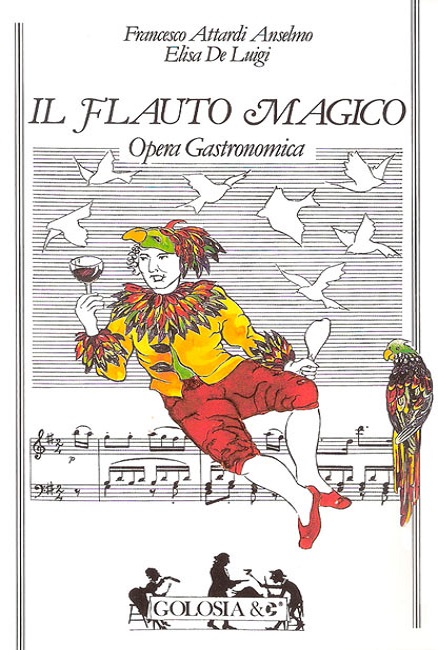
Il flauto magico
F.A. Attardi, E. De Luigi
Golosia & c.
Ed. Mursia
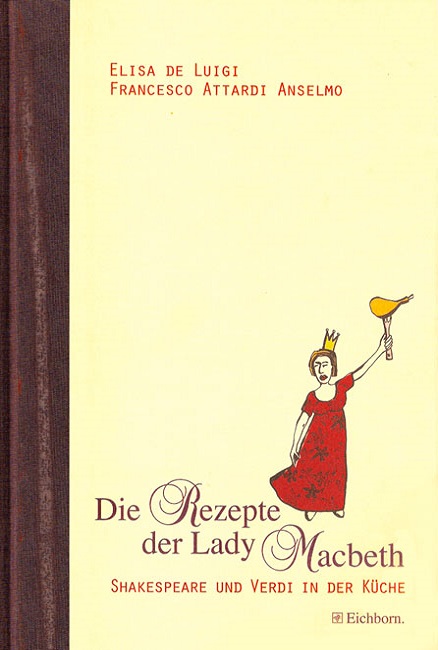
Die Rezepte der Lady Macbeth
Shakespeare und Verdi in der Küche
F.A. Attardi, E. De Luigi
ed. Eichborn

Don Giovanni in cucina
F.A. Attardi, E. De Luigi
Golosia & c.
Ed. Mursia
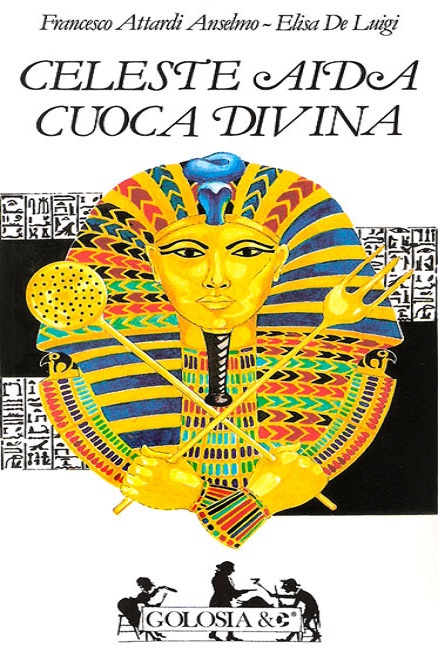
Celeste Aida cuoca divina
F.A. Attardi, E. De Luigi
Golosia & c.
Ed. Mursia
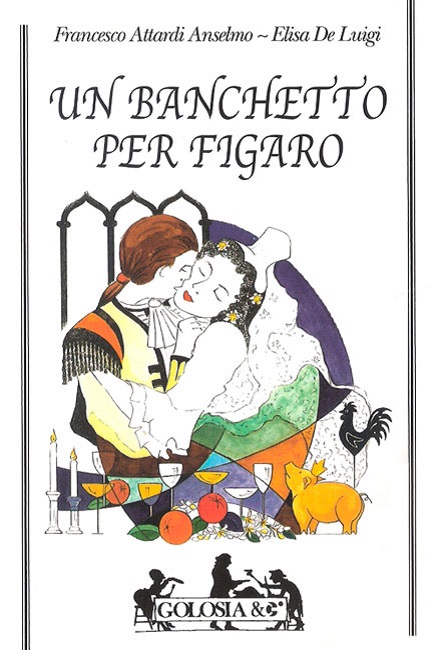
Un banchetto per Figaro
F.A. Attardi, E. De Luigi
Golosia & c.
Ed. Mursia
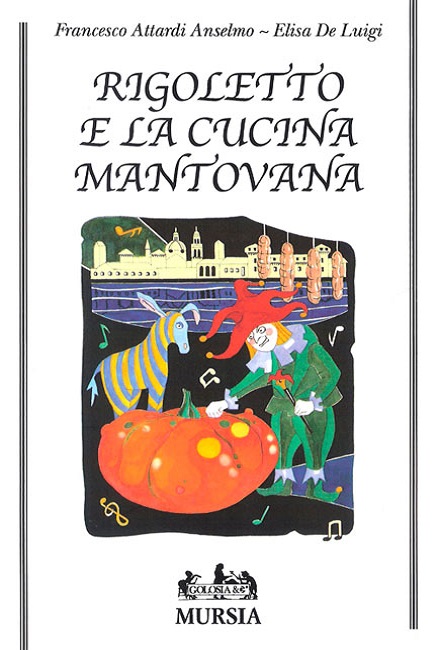
Rigoletto e la cucina mantovana
.A. Attardi, E. De Luigi
Golosia & c.
Ed. Mursia
